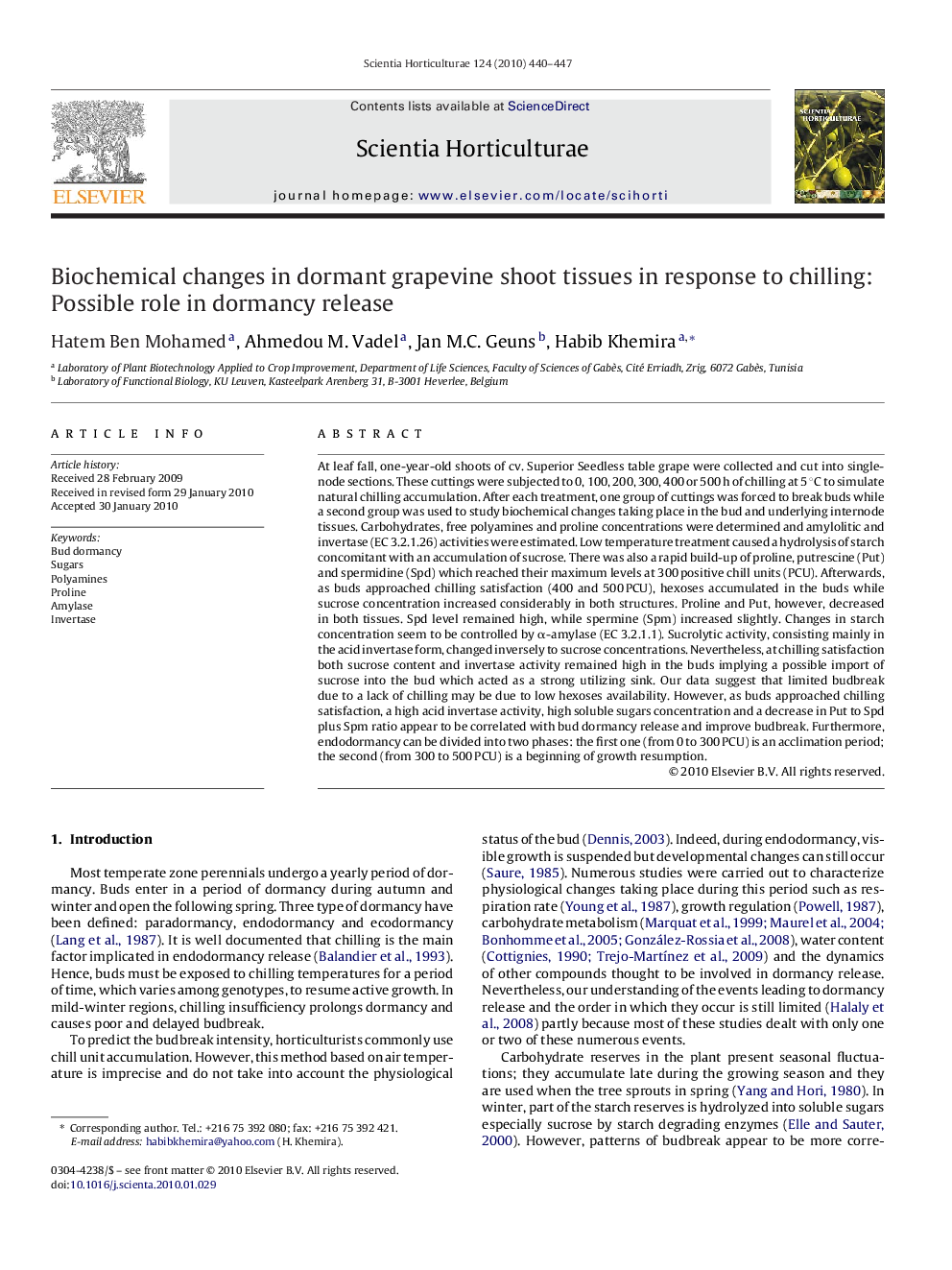| کد مقاله | کد نشریه | سال انتشار | مقاله انگلیسی | نسخه تمام متن |
|---|---|---|---|---|
| 4568492 | 1331302 | 2010 | 8 صفحه PDF | دانلود رایگان |

At leaf fall, one-year-old shoots of cv. Superior Seedless table grape were collected and cut into single-node sections. These cuttings were subjected to 0, 100, 200, 300, 400 or 500 h of chilling at 5 °C to simulate natural chilling accumulation. After each treatment, one group of cuttings was forced to break buds while a second group was used to study biochemical changes taking place in the bud and underlying internode tissues. Carbohydrates, free polyamines and proline concentrations were determined and amylolitic and invertase (EC 3.2.1.26) activities were estimated. Low temperature treatment caused a hydrolysis of starch concomitant with an accumulation of sucrose. There was also a rapid build-up of proline, putrescine (Put) and spermidine (Spd) which reached their maximum levels at 300 positive chill units (PCU). Afterwards, as buds approached chilling satisfaction (400 and 500 PCU), hexoses accumulated in the buds while sucrose concentration increased considerably in both structures. Proline and Put, however, decreased in both tissues. Spd level remained high, while spermine (Spm) increased slightly. Changes in starch concentration seem to be controlled by α-amylase (EC 3.2.1.1). Sucrolytic activity, consisting mainly in the acid invertase form, changed inversely to sucrose concentrations. Nevertheless, at chilling satisfaction both sucrose content and invertase activity remained high in the buds implying a possible import of sucrose into the bud which acted as a strong utilizing sink. Our data suggest that limited budbreak due to a lack of chilling may be due to low hexoses availability. However, as buds approached chilling satisfaction, a high acid invertase activity, high soluble sugars concentration and a decrease in Put to Spd plus Spm ratio appear to be correlated with bud dormancy release and improve budbreak. Furthermore, endodormancy can be divided into two phases: the first one (from 0 to 300 PCU) is an acclimation period; the second (from 300 to 500 PCU) is a beginning of growth resumption.
Journal: Scientia Horticulturae - Volume 124, Issue 4, 1 May 2010, Pages 440–447